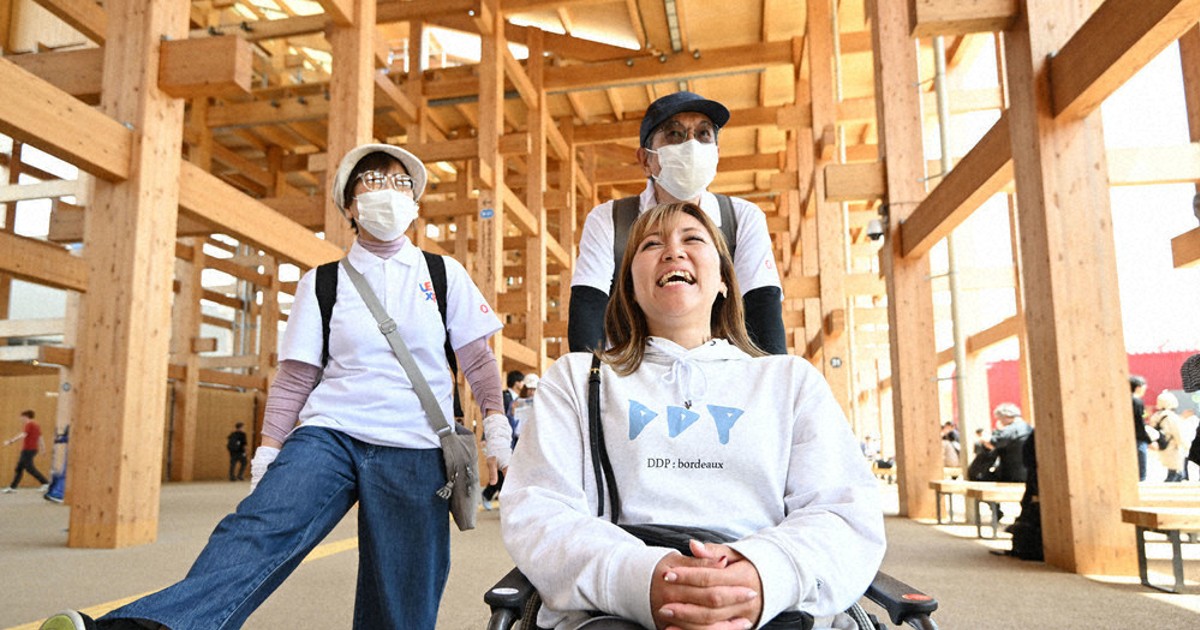Focus on EXPO Inclusion: A Wheelchair-User Perspective
Are Expos truly accessible for everyone? This crucial question takes center stage as we explore the experience of wheelchair users navigating the bustling environment of international expositions. While significant strides have been made in accessibility, challenges remain. This article delves into a wheelchair user's perspective, highlighting both successes and areas needing improvement for future Expos. We'll examine key accessibility features, discuss the impact of inclusive design, and offer recommendations for creating truly welcoming environments for all attendees.
Navigating the Expo Floor: A Wheelchair User's Journey
Attending a world expo is an exciting prospect, offering a chance to experience diverse cultures and cutting-edge technologies. However, for wheelchair users, the experience can be significantly impacted by the accessibility of the venue and its infrastructure.
Challenges Faced:
- Ramp Availability and Steepness: While ramps are essential, their steepness and length can be physically taxing. Insufficiently wide ramps create bottlenecks, especially during peak hours.
- Navigating Crowds: The sheer volume of people at an expo can make maneuvering a wheelchair incredibly difficult. Designated wheelchair lanes or wider pathways are crucial for safe and efficient navigation.
- Bathroom Accessibility: Accessible restrooms are vital. However, their location, cleanliness, and sufficient space are often overlooked. Proper signage is equally important.
- Information Accessibility: Expo maps and information displays should be accessible to wheelchair users, with clear, large print and tactile information for those with visual impairments. Digital information should be easily accessible on various devices.
- Accessibility of Exhibits: Not all exhibits are designed with accessibility in mind. Some might have physical barriers, inaccessible displays, or lack of audio descriptions.
Positive Experiences:
- Dedicated Wheelchair Assistance: Some Expos provide dedicated assistance for wheelchair users, including personnel to assist with navigation and access to exhibits.
- Accessible Transportation: Well-planned transportation within the expo grounds, including accessible shuttles and clearly marked routes, is crucial for efficient movement.
- Designated Rest Areas: Providing accessible and well-placed rest areas is vital for wheelchair users who may need breaks throughout the day.
- Inclusive Signage: Clear and comprehensive signage, including tactile maps and directional cues, greatly enhances navigation.
The Importance of Inclusive Design in Expo Planning
Creating a truly inclusive expo requires proactive planning and a commitment to universal design principles. This means considering the needs of all attendees from the initial stages of planning and design, not as an afterthought.
Best Practices for Inclusive Expo Design:
- Consult with Disability Advocates: Involve wheelchair users and disability advocates throughout the design and planning process.
- Invest in Accessible Technology: Implement assistive technologies, such as audio descriptions, captioning, and tactile displays.
- Prioritize Accessible Transportation: Ensure easy access to public transportation, accessible parking, and internal transportation systems.
- Promote Accessibility Awareness: Train staff on how to assist wheelchair users and other individuals with disabilities.
- Conduct Accessibility Audits: Regular audits ensure the ongoing maintenance and improvement of accessibility features.
Looking Ahead: Towards More Inclusive Expos
Future Expos must prioritize accessibility as a core value, moving beyond mere compliance to embrace truly inclusive design. This requires a shift in mindset, viewing accessibility not as a burden but as an opportunity to create a richer and more welcoming experience for everyone. By actively addressing the challenges and implementing best practices, we can ensure that Expos become truly inclusive events where everyone can participate and enjoy the experience.
Call to action: Share your experiences – both positive and negative – regarding accessibility at Expos. Let's collectively work towards creating a more inclusive future for these global events. Use the hashtag #ExpoInclusion to join the conversation.
